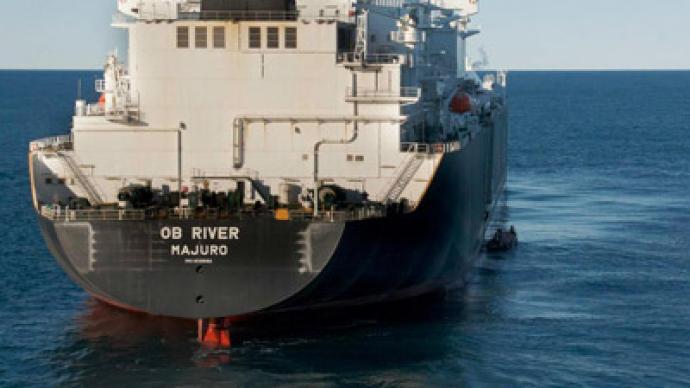Breaking ice: Gazprom’s LNG tanker opens first Arctic sea route

The tanker Ob River carrying natural gas has successfully completed a trip through the Arctic Ocean from Norway to Japan, becoming the first ship to try a safer trade route for gas supplies than the more risky routes in the Southern seas.
The ship departed November 7 from the Hammerfest Snohvit LNG facility headed for the Japanese utility Kyushu Electric Power Co. Before that the tanker completed a test trip on the Arctic sea route empty. The journey took 20 days, three weeks less than the usual route though the Mediterranean Sea, the Suez Canal and around Asia.“The trip was completed accident free and in accord with the timetable,” Russian gas major Gazprom said in a statement. The company said it has been preparing for the trip for over a year. Gazprom Marketing and Trading Ltd., a unit of Gazprom chartered the ship with an international crew of 40 from the Greek Dynagas company. The Ob River can carry up to 150,000 cubic meters of gas which is chilled under pressure to turn it into a liquid. The ship has been accompanied by Russian nuclear-powered icebreakers “50 years of Victory”, “Rossya” and “Voigach” during the trip in the Arctic waters.“Two trips of the Ob River have fully proved the technical and economic viability of the Arctic route for international LNG supplies,” Gazprom said. “With high-quality icebreaker protection, shorter delivery times, increased volumes of supply and no risks of military conflicts and pirate assaults it could be attractive and a safer solution for international trade”.Chartering an LNG tanker can cost as much as $150,000 per day, companies that want to send gas from the North Sea to North Asia could save up to $3 million using the Arctic passage instead of Suez. The cost for hiring icebreakers is an added extra. The Arctic route is suitable for navigation only few months a year, casting a shadow on the profitability of the project.But scientists say with climate change and a decreasing Arctic ice level it is likely the length of the sailing season could be extended and sea traffic across the Arctic sea route would grow rapidly. In September, scientists announced Arctic sea ice dropped to 3.4m square kilometres – 50% lower than the 1979-2000 average.














